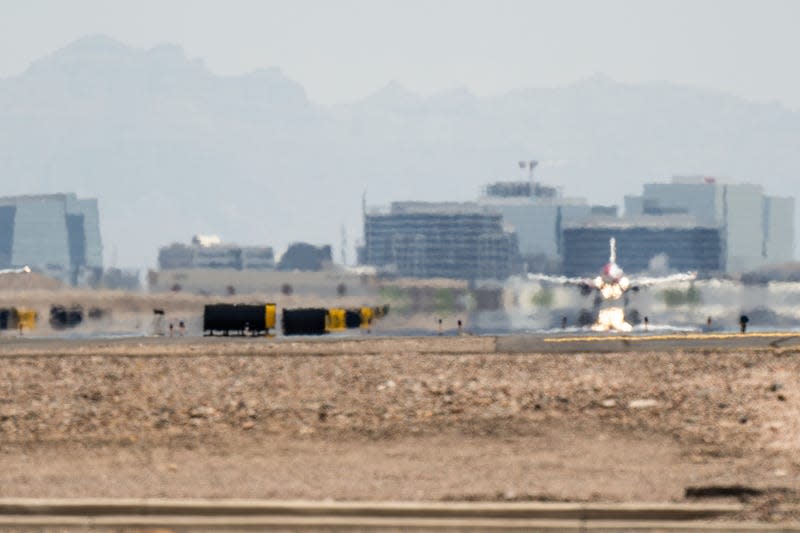Passengers Stuck For Hours In 111-Degree Plane A Glimpse Into The Future Of Flying

The U.S. Department of Transportation is investigating how folks on a flight from Las Vegas to Atlanta ended up stranded on the tarmac for four hours with no air conditioning last week. Climate change doesn’t just threaten additional weather delays and heat exhaustion cases, it could severely disrupt flying altogether.
Delta flight 555 from Las Vegas to Atlanta ended up getting canceled, but not before several passengers and crew members ended up needing medical care due to heat-induced illnesses, with one flight attendant and one passenger heading to the hospital. Temperatures in the plane reached over 111 degrees Fahrenheit, according to Reuters. This incident should never of happened under current regulations, according to U.S. Transportation Secretary Pete Buttigieg:
Read more
“I want to know how it was possible for passengers to be left in triple-digit heat onboard an aircraft for that long,” Buttigieg told Reuters on Thursday, calling the issue “infuriating” and “shocking.”
During tarmac delays, airlines must provide comfortable cabin temperatures and begin moving the plane within three hours of a delayed domestic flight to a location where passengers can exit.
Delta said it is reviewing the incident and added that multiple passengers were seen by first responders, while a flight attendant and passenger were transported to a local hospital.
“Even under normal temperatures a tarmac delay is not supposed to go that long and we have rules about that, which we are actively enforcing and this is being investigated right now,” Buttigieg said, adding there are also rules on maximum cabin temperatures.
The heat isn’t just hitting U.S. flights. A RyanAir flight from Málaga, Spain to Milan, Italy, was delayed three hours while local temperatures hit 107 degrees. Some passengers required medical treatment on the tarmac once they were finally released from the sweat tube. Passengers had to wait even longer before the flight took off—a grand total of 10 hours in delays, according to the New York Post. To add insult to injury, the air conditioning for the entire Málaga airport was down, leaving stranded passengers few places to find relief.
The problem inside the fuselage however, is that airplanes are generally cooled at the gates. Once they’ve taxied, however, planes are sucking in the tarmac-baked hot air into both the passenger compartment and the engines.
Hotter temperatures are already leading to an increase in violent turbulence and violent storms, which can lead to injuries as well as huge snarls in the complicated staffing and plane traffic systems that controls our skies. But those aren’t the only problems presented by warmer weather, according to Time:
High temperatures make air less dense, reducing engine performance and the amount of lift produced at a given speed. That generally means lower takeoff weights and longer takeoff distances are needed to produce sufficient lift. As a result, carriers are having to reduce pounds on the planes.
On July 17, several Delta Air Lines Inc. passengers voluntarily got off a flight from Las Vegas to Atlanta after aircraft weight issues in the heat caused delays.
“Additional protocols have been put in place to address the operational impacts extreme heat has on aircraft, including loading less fuel to account for weight and balance and schedule refueling along the route when needed,” Delta said in a statement Friday.
Can you imagine going through all the pain of boarding a plane only to find out its too heavy to fly and then getting off? Delta would have to offer me a trip around the world and a kiss on the cheek minimum.
This week, and mostly likely the weeks after, are set to be another series of scorchers, Time reports. Vegas hasn’t seen a high under 100 since June 30, and Phoenix is in the same boat. The last time flights were canceled due to extreme heat was in late August and early September of 2017, which broke records across the American southwest and in the Mediterranean region.
More from Jalopnik
Sign up for Jalopnik's Newsletter. For the latest news, Facebook, Twitter and Instagram.

 Yahoo Autos
Yahoo Autos 